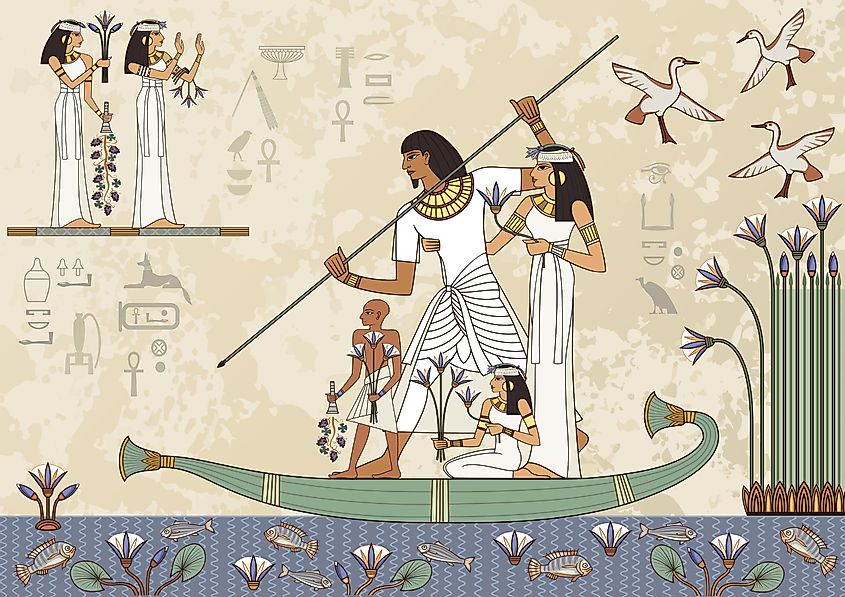Papyrus Large-Size - The Musicians
Natural papyrus with outline motif - natural border - approx. 32 × 42 cm
This is how history can be "grasped"! A real experience and guaranteed unforgettable.
Ideal for theme-related school and art lessons.
About the motif
As a band for a banquet, a group of young girls play to entertain the guests. Composition and performance of music and dance were a respected art form in ancient Egypt. The musicians use a double oboe, a lute and a harp.
For painting
12 double-fibre pencil - Article No. 2701
Pilot Pintor - White, Gold, Silver Article No. 2703
Set of 6 tempera paints - Article No. 2711
Set of 14 tempera colours - Article No. 2712
Brush set 6 pieces - Article No. 2713
Mixing palette - Article No. 2714
PGI Bookmark
made of hand-laid papyrus, produced in Egypt
silkscreen motif, natural border
can be painted with fibre-tip pens and watercolours
| Aspiration scale: | Medium |
|---|---|
| Time Line: | 2,0 Hours |
The Musicians
As a band for a guest banquet, a group of young girls play to entertain the guests. Composition and performance of music and dance were a respected art form in ancient Egypt. The female musicians use a double oboe, a lute and a harp.
The musical culture of ancient Egypt was characterised by an extraordinarily long, relatively continuous and stable tradition. On the one hand, music served religious, ceremonial rituals, on the other hand, it was also used for everyday pleasures.
The instruments were varied and rich. Over the centuries, it developed continuously and was enriched by imports from foreign countries. Hand claps and the clatter of ivory drumsticks accompanied the dancers already in the Old Kingdom, especially when it came to acrobatic performances.
The quiet dance figures, on the other hand, more stepped than jumped, are usually accompanied by larger instrumental ensembles. These are composed of one or more mouth-less and half-played longitudinal flutes, as well as one or more harpists. Later, the double oboe and the 5-7 stringed lute with a very small sound box are added.
The singers, who are always depicted seated, hold their left hand behind the left ear in the manner of the Arab tradition, while the right hand often performs cheironomic signs, either to draw the melodic line in the air or to give rhythmic signs. The sound was rather nasal, sharp, due to the use of a "vocal mask" with sharp tension of the facial muscles.



